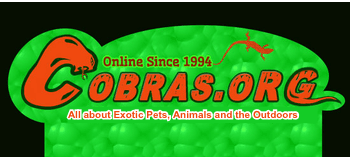Sharing your home with both a wiggly puppy and a serene reptile might sound like the beginning of a cartoon, but for many multi-pet households, it’s a real—and totally achievable—dream. While dogs and reptiles may seem like an unlikely duo, thoughtful design and a bit of planning can turn your home into a peaceful retreat where both pets feel safe, stimulated, and right at home. The key is understanding their vastly different needs and creating a space that honors them equally. As part of our pets tips section, we’ll delve into some useful tips on how to create a pet-friendly habitat.
Creating a harmonious environment where curious puppies and fascinating reptiles coexist begins with thoughtful planning and attention to each species’ needs. Whether you’re moving both pets into a new home or simply redesigning your current space, integrating reliable animal transportation services into the process can smooth the transition and reduce stress for all involved. Inadequate preparation often leads to safety risks or behavioral issues, so taking the time to design shared areas that respect the natural instincts of both puppies and reptiles is essential. A well-planned habitat not only safeguards physical health but also fosters mental enrichment and positive interactions.
Combining Puppy Zones and Reptile Enclosures
The addition of specialized puppy and reptile areas requires both ingenuity and pragmatism. For puppies, a safe playpen or an enclosed space around family members will help them interact with others while remaining confined and safe. The puppy areas should have chew-proof barriers, slip-resistant floors, and enrichment items like secure toys or chewable snacks. Hygiene and comfort are achieved through adequate ventilation and materials that are easily cleaned. In the meantime, the reptile enclosures are also well-built and have solid locks to keep prying paws out of the way of heating lamps or glass sides. Creating reptile environments on a level that puppies cannot reach also reduces accidental exposures and possible injuries.
Balancing Common Work Areas
Puppies are social animals, and thus having a common area would encourage family members to spend time there, which would automatically attract the puppy to that area. When done correctly, this can be enriching to both species by integrating reptile viewing stations nearby. The viewing stations could contain glass-fronted terrariums where large viewing windows are at the eye level of adults, and puppies cannot knock down or interfere with the enclosure. Placing these stations where the hands and paws of young children cannot reach saves accidents and still enables family members to see the reptiles safely. An enclosure can also be secured to a stand or even a wall mount to prevent the puppy from jumping or sniffing.
Designing and Materials That are Safe
The choice of building materials and furnishing is critical as it helps to reduce risk. Sealed flooring (moisture and scratch resistant) with smooth surfaces facilitates easy cleaning of spills or displacement of substrates that may result from accidents. Stay away from carpets that hold debris or bedding where the inquisitive puppies can consume. Instead, opt for vinyl or tile flooring and washable area rugs in high-traffic areas. In reptile habitats, tempered glass or high-quality acrylic can reduce the risk of the glass cracking due to a chance impact. To prevent the risk of the puppy or reptile chewing on the electrical cords, they should be secured behind cord guards or placed inside cable conduits to minimize the risk of damage.
Encouraging Mental Nutrition of Both Animals
In addition to safety, the mental stimulus helps avoid boredom and fosters overall well-being. Puppies enjoy scent games, puzzle toys, and brief training exercises that challenge their young minds. Having the enrichment stations in places that are not in the same vicinity as the enclosures of the reptiles will help the play to remain undisturbed. Toys should be switched regularly to prevent resource guarding and to maintain novelty. In the case of reptiles, adding hiding places, climbing branches, or feeding puzzles to the tank will recreate their natural environment and promote curiosity. Reptiles also engage in selective thermoregulation by partitioning their enclosure into various substrate zones or temperature gradients, encouraging them to move naturally within their enclosure.
Supporting Caregiver Workflow
Creating the habitat with the efficiency of caregivers in mind facilitates the daily maintenance routine and minimizes the risks of oversight. Put puppy supplies, including bowls, leashes, and cleaning supplies, within easy access of the play area, preferably in a closed cabinet or strong basket. Likewise, reptile group care items such as food, supplements, and cleaning equipment are placed close to the terrarium to prevent cross-contamination. Mark storage bins and keep a brief checklist of feeding times, clean-ups, and temperature monitoring. Caregivers will be able to observe the puppy antics and the delicate care needs of reptiles because they are not spending time walking back and forth across the room to retrieve items.
Having several species share a roof can be a rewarding experience when their habitats are well-planned. Having separate areas (for puppies and reptiles), maximizing safety with the use of hard materials, and encouraging mental stimulation depending on the species under consideration, you can develop a harmonious environment in which both pets thrive. The inclusion of effective work patterns among caregivers and monitored communal activities also contributes to the balance, allowing families to experience the most optimal environment. Your house can be transformed into a pet-friendly oasis that caters to the specific needs and behaviors of puppies, as well as reptiles.



